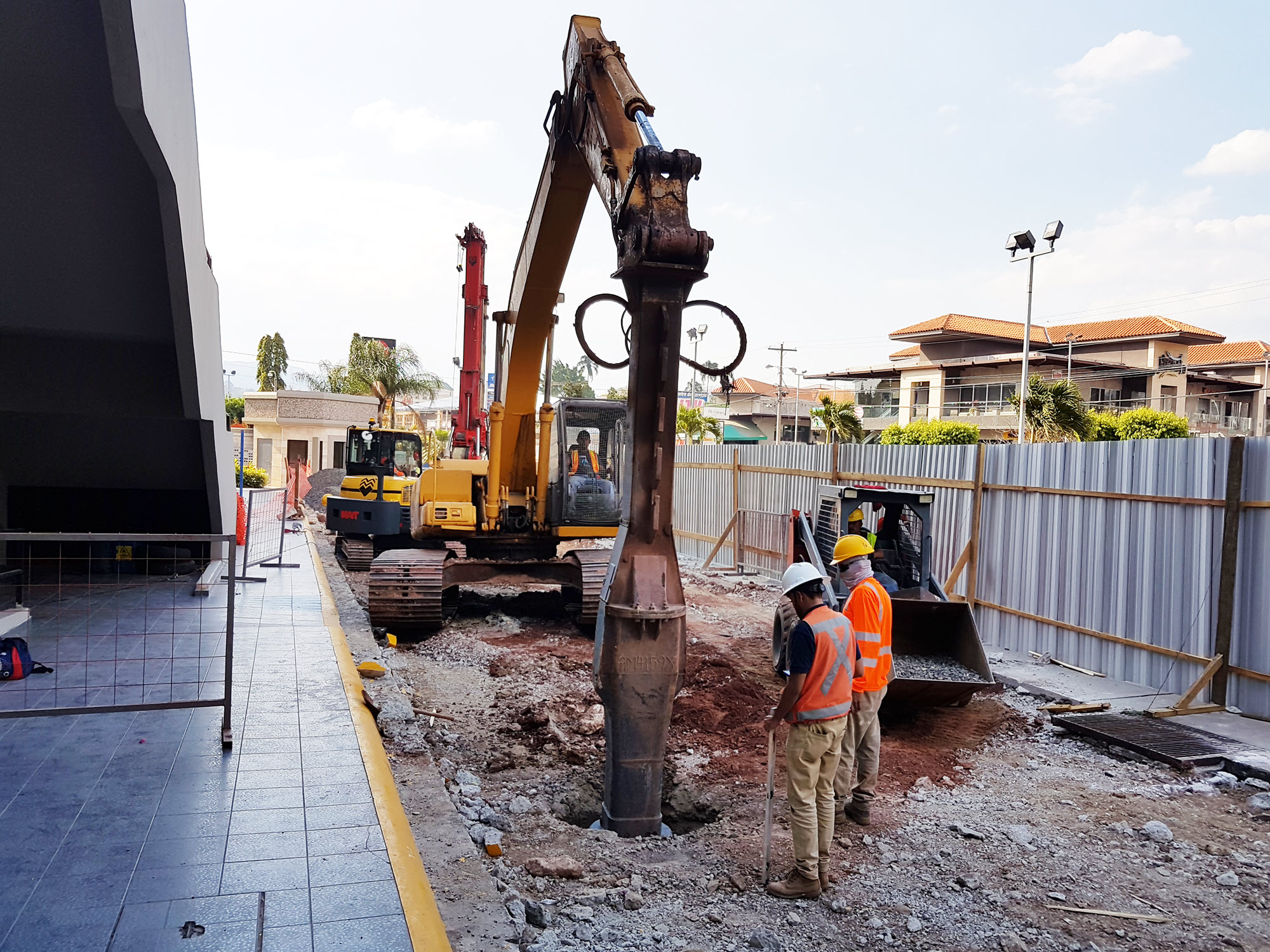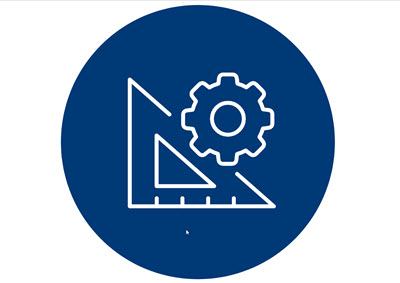Welcome back to Geopier MythBusters, where we dispel some of the Geopier related myths circulating in the design-build world. This article is the third installment of Geopier MythBusters and will focus on three myths related to installing Geopiers next to existing structures.
Myth 5: Geopier elements cannot be installed adjacent to existing buildings because of vibrations.
Myth 6: Geopier will cause unfavorable settlements to the existing structure.
Myth 7: Geopier installation will damage below-grade structures.
Our hope is that these MythBusters help you better understand our capabilities so that you can design using Geopier with confidence.
Urban environments and building additions can pose several construction risks, not least of which is how the new construction could impact adjacent structures. Thankfully, Geopier has worked on thousands of projects in major cities across the globe and has developed design and construction means and methods to mitigate these risks.

Myth 5: Geopier elements cannot be installed adjacent to existing buildings because of vibrations
Make no mistake, Rammed Aggregate Pier® (RAP) installation creates vibrations. If not, we would not be able to achieve the level of ground improvement we need to fix marginal soils! But rest assured that we are no more interested in damaging adjacent buildings than you are.
- Geopier installation creates vibration levels that are low amplitude and high frequency, resulting in lower vibrations measured at adjacent sites.
- Geopier has done extensive research to develop safe minimum working distances and keep peak particle velocities (PPV) between 0.5 in/sec and 2 in/sec (i.e., below levels where structural damage could occur).
If the project team is still concerned, there are additional measures that can be taken:
- Pre-drilling: Pre-drilled piers create lower PPV than our displacement solutions.By pre-drilling the pier locations, we can install piers closer to existing structures.
- Move the piers away from structure:We can work with the structural engineer to deliver a solution that allows the load to cantilever away from the building and into our piers.
- Monitor vibrations: When in doubt, measure the vibration levels and perform a pre-construction conditions survey to protect against frivolous lawsuits!

For more information on vibration, please click on the link to read Geopier Technical Bulletin 9: Vibration and Noise Levels.
Myth 6: Geopiers will cause unfavorable settlements to the existing structure
Could installing piers next to an existing building cause unfavorable settlement? To properly evaluate this concern, it is essential to understand the foundation type of the existing building.
- For existing buildings on deep foundations, Geopier should have little to no effect on the existing structure.The existing deep foundations are designed to carry the load to a deeper bearing layer that won’t be affected by the RAP solution.
- For existing buildings on shallow foundations, Geopier installation could potentially undermine the existing footings; however, there are ways to mitigate the risk:
- Installation can be sequenced to avoid having multiple open holes adjacent to existing footings which could undermine the footings.
- Temporary casing or displacement systems can be used to eliminate the potential for undermining the footings.
- Geopier can work with the structural engineer to cantilever the new loads away from the building, allowing the piers to be installed farther away from the existing footings.
- For existing buildings on shallow foundations there is also a risk of inducing additional settlement of the existing footings because of stress overlap. To manage this risk:
- Geopier can use rigid inclusions, helical piers, or ductile iron piles adjacent to the existing foundations to transfer the loads to a deeper bearing layer and avoid loading the bearing soils of the existing footings.
- Geopier can coordinate with the structural engineer and perform a comprehensive overlapping stress analysis to determine if the existing structure can handle additional settlement.
Myth 7: Geopier installation will damage below-grade structures.
One final concern when installing RAPs adjacent to existing buildings is potentially damaging any below-grade structures such as basement walls, utility lines, vaults, etc. A few thoughts on below-grade structures:
- How often are utility lines not actually installed where the drawings say they are? As always, you should call 811 before you dig and consider using a private utility locator to identify below-grade utilities. If you still are unsure, perform test pits or probes to verify utility locations.
- Pier installations induce lateral loads that could potentially damage below-grade structures. We can work with the project team to identify the limits/locations of below-grade structures and then re-layout our piers to avoid causing issues. This may require footings to be oversized or reconfigured to accommodate the change in pier locations.
- Pier-supported footings transfer loads directly beneath the bottom of footing, which can put vertical loads on below-grade structures within the zone of influence. Geopier can use rigid inclusions, helical piers, or ductile iron piles in areas with below-grade structures to drop the footing loads below the bottom of the below-grade structure.
Fixing below-grade structures is an expensive and time-consuming proposition that is best avoided by any means necessary. A little bit of up-front planning can go a long way!
Want to learn more?
Access Geopier Solutions’ pocket card to quickly compare common methods of ground improvement techniques.
Access Ground Improvement MythBusters 1-4
- Myth 1: Geopier can’t be installed below the groundwater table
- Myth 2: Geopier cant be used to support heavy loads
- Myth 3: Geopier systems cannot be used in soft clays and organic soils
- Myth 4: Geopier is not cost-effective on small projects
Contact your local Geopier engineer | Submit a project | Subscribe | geopier.com




